On this day in music history: January 30, 1968 - “White Light/White Heat”, the second album by The Velvet Underground is released. Produced by Tom Wilson, it is recorded at Scepter Studios in New York City in September 1967. Following the disappointing response and meager sales of their debut album, the members of The Velvet Underground decide to fire pop artist Andy Warhol as their manager and co-producer, also removing singer Nico from the band. After spending much of 1967 touring, The Velvets return to the studio in the Fall with producer Tom Wilson to record their follow up release. Consisting of only six songs written by Lou Reed (with co-writing contributions from the other members on three tracks), the tone of “White Light” is darker and more aggressive than its predecessor, a direct reflection of the band’s lives at the time. Recorded in only two days, the material on the album covers then highly taboo subject matter including drug use (the title track), graphic sexuality (“Here She Comes Now”) and transgenderism (“Lady Godiva’s Operation”, “Sister Ray”), backed by a wall of screeching feedback and a thudding back beat. The darkness of the album also extends to its cover artwork featuring a stark black background with artist name and title printed in white, with a faint impression of an arm with a skull tattoo in the lower left hand corner. The tattoo belongs to Warhol Factory actor Joe Spencer, who appeared in the film “Bike Boy”. When it is reissued in 80’s, the original cover art is altered, increasing the size of the text on the front cover and doing away with the tattoo. In the mid 70’s, an alternate cover featuring toy soldiers against a white background is issued in the UK, remaining in print until the early 80’s. Once released, “White Light” performs even more poorly than the first VU album, barely scraping the bottom of the Billboard chart before falling off after only two weeks on. In spite of this, its reputation grows over time, becoming as influential as their landmark debut, inspiring generations of rock musicians and helping lay the musical template for punk rock, post punk and grunge. A number of bands including Nirvana, Joy Division, The Sisters Of Mercy, Cabaret Voltaire, Galaxie 500, and The Hoodoo Gurus record cover versions of songs from “White Light”. For its 45th anniversary in 2013, it is remastered and reissued as a three CD deluxe edition. The first disc features the stereo version of the original six track album, with seven additional bonus tracks including alternate mixes, instrumentals and other previously unreleased songs from the sessions. The second disc features the mono mix of the album. The third disc features a live performance recorded in New York City on April 30, 1967.The deluxe edition (minus the live material) is also issued as a 180 gram double vinyl LP. “White Light/White Heat” peaks at number one hundred ninety nine on the Billboard Top 200.
Pages
▼
Wednesday, January 31, 2018
Nearly . . . . about a year out I reckon . . . .and I hung around with a gang of folk some of whom collected this band's music and it at once scared me and tittilated me . . . . . then I GOT it and this was the first one I bought and stuck with them to the bitter end and still follow John Cale and all his truly astonishing creative output ever since . . . .
Further visits to the end of live Beatles . . .
On this day in music history: January 30, 1969 - The Beatles perform live for the last time on the roof of the Apple building at 3 Savile Row in London. Filmed as the climax of the documentary film “Let It Be”, the band perform a forty-two minute long impromptu set (only half appears in the finished film) consisting of the songs “Get Back” (performed twice), “Don’t Let Me Down”, “Dig A Pony”, “One After 909” and “I’ve Got A Feeling”. The performance quickly attracts attention from the street below, drawing a huge crowd, stopping traffic in central London, and leading the police to bring the concert to a halt. The roof top concert captures a rare glimpse of The Beatles during their last days as a functioning unit, and becomes an iconic moment in their history.
Bought this and it's replacement as soon as it came out . . . .
On this day in music history: January 30, 1972 - Paul McCartney writes and records “Give Ireland Back To The Irish” with Wings in response the “Bloody Sunday” massacre in Northern Ireland in which thirteen unarmed civil rights protesters are shot and killed by British Army soldiers. Being of Irish decent himself, McCartney feels moved to comment on the shocking and tragic incident. The track is recorded at Island Studios in London two days after it’s written on February 1, 1972. It is the first Wings track to feature new lead guitarist Henry McCullough, formerly of The Grease Band (singer Joe Cocker’s backing band). Initially, EMI Records refuses to release the song, feeling that is “too inflammatory”, but issues it at McCartney’s insistance. The single is released a month later on February 25, 1972 (US release date is on February 28, 1972) and is immediately banned from airplay by the BBC, Radio Luxembourg, and the Independent Television Authority. The original 45 is released with a custom label with five green shamrocks printed across the top, and packaged in a bright yellow die cut sleeve with the band name printed on the front and back. In spite of the ban, it hits #1 in Ireland, peaking at #16 on the UK singles chart, and #21 on the Billboard Hot 100. Originally released as a stand alone single only, “Give Ireland Back To The Irish” is included as a bonus track on the CD reissue of Wings’ first album “Wings Wild Life” in 1993.
and when it was banned over here in the UK McCartney released 'Mary Had a Little Lab' in response to the gutless Beeb not standing by him . . . . while hardly a polemic or politically thorough statement to ban it was silly it seemed to me then . . . . . .one man and his band showing solidarity with the civil rights movement of the slaughter of innocents and his family roots
a worthy post from the wondrous . . . . .

Aquarium Drunkard - Joan Shelley Nick Drake cover here

Covering Nick Drake can be tricky, but Joan Shelley manages just fine with her gorgeous, heartfelt rendition of Five Leaves Left’s lead off track (part of Mojo Magazine’s new tribute to Drake, available gratiswith the March issue). She doesn’t do anything radical with the song — she just lets it breathe, wearing its wistful melancholy like a favorite winter coat. Shelley is back on the road this year, supporting her recent self-titled LP. In fact, for a few dates, she’ll be supporting the guy who played lead guitar on the original “Time Has Told Me” — the mighty Richard Thompson himself, who has been known to cover the tune from time to time. Maybe Joan can coax him onstage for a duet … words / t wilcox download it here . . . .
We like Joan Shelley. We like Nick Drake (a lot). We like Richard Thompson (he's on it - the original that is). We like Aquarium Drunkard
Tuesday, January 30, 2018
Wasn't going to post this and then I listened to this take and it is glorious and fun too!
I have said elsewhere I came later to The Beatles than some (my big brother) and let the first few singles and albums pass me or rather took them for granted until maybe Rubber Soul but this take of 'classic' single 'Can't Buy Me Love' illustrates a band in progress with the rhythm guitar and George's lead take with Paul's lead vocal way back in the mix make it a curio well worth a listen . . . . . .
I have said elsewhere I came later to The Beatles than some (my big brother) and let the first few singles and albums pass me or rather took them for granted until maybe Rubber Soul but this take of 'classic' single 'Can't Buy Me Love' illustrates a band in progress with the rhythm guitar and George's lead take with Paul's lead vocal way back in the mix make it a curio well worth a listen . . . . . .
On this day in music history: January 29, 1964 - “Can’t Buy Me Love” by The Beatles is recorded. Written by John Lennon and Paul McCartney, it is the sixth UK single for the legendary Liverpool, UK rock quartet. Actually written by Paul (but credited to Lennon and McCartney), the song is written while The Beatles are in the middle of a concert engagement at the Olympia Theater in Paris. Searching for ideas for a follow up to “I Want To Hold Your Hand”, number one in the UK at the time, and The Beatles have just learned that it has hit the top of the US pop singles charts, McCartney sits at the piano in the band’s suite at the George V Hotel, writing “Can’t Buy Me Love” in a few hours. The songs’ lyrics are a reflection on the bands’ huge success though still in its early stages. The point being that in spite of the material possessions fame and wealth bring, that they don’t give you what you really need, which is happiness and someone that loves and cares about you. Showing what he’s come up with to producer George Martin (who is also traveling with The Beatles), Martin suggests that McCartney begin the song with the chorus, rather than the first verse as it had been originally written. On a day off from their live concert schedule, the band record the song at EMI’s Pathé Marconi Studios in Paris, France. They enter the studio initially to record German language versions of “She Loves You” and “I Want To Hold Your Hand” at the insistence of EMI’s German label Odeon. After the first two songs are completed, the band run through four takes of the new song before perfecting the rhythm track. The first two takes differ from the finished version, being recorded in a higher key. Take three, the first attempt at the song in a lower octave breaks down during the first verse after Paul flubs and forgets the words. They also drop the background vocals by John and George on the third take. Take four is the master take, but is subjected to further overdubs and remixing when the band returns from their first trip to the US in late February. “Can’t Buy Me Love” is completed and mixed at Abbey Road in London on February 25, 1964, then released on March 16, 1964 in the US and March 20, 1964 in the UK.
Sunday, January 28, 2018
I didn't get this rarities album when it came out but it gives me an excuse to re-visit 1985 and a favourite album 'In Between Days
Loved In Between Days . . . .fine fine album and the titular track is classic Cure, the wobble on the instruments in this track, The Exploding Boy, is really haunting/disturbing/distressing . . . . . . . I love it!
On this day in music history: January 27, 2004 - “Join The Dots: B-sides & Rarities 1978 -2001 (The Fiction Years)” by The Cure is released (UK release is on January 26, 2004). Produced by The Cure, Robert Smith, Chris Parry, Phil Thornalley, Dave M. Allen, Steve Nye, Mike Hedges and Paul Corkett, it is recorded at Various Studios from 1978 - 2001. The seventy track, four CD box set is a compilation of non-LP B-sides, other rare tracks and previously unreleased remixes by the band recorded between 1978 and 2001. The set also includes a booklet featuring commentary on each track by band leader Robert Smith as well as an overview of the band’s history up until the time of the compilations’ release. “Join The Dots: B-sides & Rarities 1978 - 2001 (The Fiction Years)” peaks at number ninety eight on the UK album chart and number one hundred six on the Billboard Top 200.
Loved In Between Days . . . .fine fine album and the titular track is classic Cure, the wobble on the instruments in this track, The Exploding Boy, is really haunting/disturbing/distressing . . . . . . . I love it!
Because . . . . . . .the world is round . . .
also this day . . . . . . . I bought this when it came out too!
thanks to the most excellent Jeff Harris' blog 'Behind The Grooves
On this day in music history: January 27, 1969 - The Beatles record the master take of “Get Back” at Apple Studios in London. Written by Paul McCartney (credited to Lennon - McCartney), the song is born out an informal jam when the band are still rehearsing at Twickenham Studios on January 7, 1969. When the sessions move to Apple, they are joined by keyboardist Billy Preston (at the invitation of George Harrison). It is there that the band make their first attempt to record the song properly on January 23, 1969. The released master is recorded in fourteen takes also adding the false ending and reprise that distinguish it from the LP version recorded on the roof of Apple on January 30, 1969.
also this day . . . . . . . I bought this when it came out too!
On this day in music history: January 27, 1970 - John Lennon writes and records “Instant Karma! (We All Shine On)”. It is the third solo single for The Beatles rhythm guitarist. Lennon comes up with the idea for the song over breakfast on the morning of January 27th, quickly writing the music and lyrics in under an hour. The inspiration for the song comes after a trip John and Yoko take to Denmark in December of 1969, to visit Ono’s daughter Kyoko who is living there with her father and stepmother. While in Denmark, Lennon has a conversation with Melinda Kendall, the second wife of Yoko Ono’s former husband Tony Cox. Kendall coins the phrase “instant karma”, coming from the idea that the outcome of a persons actions is immediate, rather than taking place over one’s lifetime. Enlisting the help of producer Phil Spector, they go into Abbey Road Studios that evening, recording the song with musical backing from George Harrison, Billy Preston, Klaus Voorman, Alan White and a vocal chorus provided by a group people recruited from a local night club. The single is issued just ten days later in the UK (US release is on February 20, 1970). Lennon and Ono perform the song live on the long running British music show Top Of The Pops on February 11, 1970, just five days after the singles’ UK release. Issued just four weeks ahead of The Beatles own single “Let It Be”, both singles is in direct competition with each other on the charts, with both residing the top five at the same time. “Instant Karma! (We All Shine On)” peaks at #3 on the Billboard Hot 100 on March 28, 1970 and #5 on the UK singles chart, and is certified Gold in the US by the RIAA.
thanks to the most excellent Jeff Harris' blog 'Behind The Grooves
Saturday, January 27, 2018
again a single bought when it came out and Lene is and was an odd fish . . .the message of this and additional EP track 'Too Tender To Touch' sums up everything we think we know about her . . . . . . . in this peon to onanism and that the tracks bely that she may have certain issues around relationships but hey that's why we dug her . . . . . . . fascinating stuff but sadly destined to become pretty much a one hit wonder
On this day in music history: January 26, 1979 - “Lucky Number” by Lene Lovich is released. (US release date is in June 1979). Written by Lene Lovich and Les Chappell, it is the fourth UK and first US single release for the New Wave vocalist from Detroit, MI. Born Lili-Marlene Premilovich to an English mother and Serbian father, Lene’s mother relocates the family to the British Midlands city of Hull in the early 60’s, when her father begins having mental health issues. While living in Hull, Lovich meets Les Chappell, who shares her interests in music and art. The pair become a couple, eventually attending art school in London and starting a band. Chappell teaches her guitar, while Lovich also learns the violin and saxophone. By 1975, they join a disco/funk band called The Diversions, recording several singles and a full album without any success. After the band breaks up, Lovich reaches out to writer and DJ Charlie Gillett asking him for assistance in putting together another band. When no one responds, Gillett helps her record a demo tape which includes a cover version of Tommy James & The Shondells’ “I Think We’re Alone Now”. He takes the tape to David Robinson at the seminal British punk and new wave label Stiff Records. Robinson likes the tape and decides to sign Lene. “I Think We’re Alone Now” is released in July of 1978 in a limited pressing of 5,000 copies. On the B-side of the record is an early version of a Lovich/Chappell original titled “Lucky Number”, punctuated with her mimicking the sound of an English telephone dial tone throughout. “Lucky” ends up attracting much more attention than the A-side, with Stiff giving her and Les the green light to quickly record a full album. The album titled “Stateless” is released in October of 1978, re-recording “Lucky Number” in a tighter and more up tempo arrangement. It’s issued as an A-side in January of 1979, and the quirky and infectious song takes off quickly. Making a now famous appearance on Top Of The Pops, British audiences get their first glimpse of the singer. Wearing her hair in long braids and dressed in flowing black dresses and lace, she is a mysterious and charismatic presence from the outset. The record soars to number three on the UK singles chart on March 18, 1979, turning Lene Lovich into an instant pop star. The single and album are released in the US on the back of their UK success through CBS distributed Epic Records, who distributes the Stiff label stateside. Though neither charts, Lovich develops a loyal cult following in her home country, later hitting the US dance charts with “New Toy”, co-written with her tour keyboardist and future star Thomas Dolby. Acknowledged as a new wave classic, “Lucky Number” is also covered by German punk and new wave icon Nina Hagen, and is sampled and interpolated by Canadian DJ and electronic dance music artist Tiga on “I’m Having So Much Fun” in 2016.
thanks to the most excellent Jeff Harris' blog 'Behind The Grooves
thanks to the most excellent Jeff Harris' blog 'Behind The Grooves
Friday, January 26, 2018
MARK E. SMITH
The Fall singer dies at 60
Never really a fan of the Fall and only have one album ( 'Live at The Witch Trials' )
Captain Beefheart has been alluded to in the eulogies pouring forth and I don't see or hear it frankly. The fact that the Mancunian post punk couldn't sing and had in retrospect what was an affected mannerism in over speaking the lyrics, so called, and voice that grated on this listener and poet a la Don Van Vliet he certainly was not but hey, other than that we respect a fellow Northern curmudgeon which seems to be his greatest personal trait or characteristic and for that I am sorry he is gone
A Beefheart Facebook page said this:
Mark E. Smith, lead singer of the Fall, died yesterday aged 60. He saw himself primarily as a writer who wanted to combine interesting lyrics with primal rock 'n roll. Others dubbed the Fall punk, post punk, art punk, new wave etc. I have loved his work for the last 33 years of my life, since I was 16 years old, and it means as much to me as the work of Captain Beefheart and the Magic Band. Both artists were introduced to my world by the broadcaster John Peel who loved them both equally. Words can't really convey what Mark E. Smith meant to me but i am grateful I discovered his genius. Mark Edward Smith born 5th March 1957 - died 24th January 2018 - Rest In Peace
In retrospect a drunk who finds themselves so amusing and 'post punk' arrogant wit largely is an idiot so ubiquitous that you could not throw a stick in any pub throughout the UK in the Seventies without hitting legions of them but Smith is something different I think despite his acknowledged curmudgeonliness (how do you justify the over 66 members who have passed through the institution of The Fall?!"Hey if it is me and your Granny on the bongos, it's The Fall" - Smith ) those who could put up with or even tolerate the bloody minded vocalist doubtless will acknowledge his place in the contemporary music pantheon. His death at an early age (and younger than yours) truly goes some way towards acknowledging his importance. We knew it was coming. All the signs were there despite his alcohol dependancy or abuse whatever your slant and we know that he wasn't Dylan Thomas, Don Van Vliet or anyone else come to that, he was Mark E. Smith.
in his prime . . . . . .
Donnie Sutherland and 'Sounds' in Australia
Deer Park
I took a walk down West 11 (2)
I had to wade through 500 European punks (3)
In an off-license I rubbed up with some oiks (4)
Who threw some change on the Asian counter
And asked polite if that covered two lagers
A hospital discharge asked me where he could crash
I had to wade through 500 European punks (3)
In an off-license I rubbed up with some oiks (4)
Who threw some change on the Asian counter
And asked polite if that covered two lagers
A hospital discharge asked me where he could crash
Have you been to the English Deer Park?
It's a large type artist ranch
This is where C Wilson wrote Ritual in the Dark (5)
Have you been to the English Deer Park?
It's a large type artist ranch
This is where C Wilson wrote Ritual in the Dark (5)
Have you been to the English Deer Park?
Spare a thought for the sleeping promo dept. (6)
They haven't had an idea in two years
Dollars and deutchmarks keep the company on its feet
Say have you ever have a chance to meet
Fat Captain Beefheart imitators with zits? (7)
Who is the King Shag Corpse? (8)
They haven't had an idea in two years
Dollars and deutchmarks keep the company on its feet
Say have you ever have a chance to meet
Fat Captain Beefheart imitators with zits? (7)
Who is the King Shag Corpse? (8)
Have you been to the English Deer Park?
It's a large type minstrel ranch
This is where C Wilson wrote Ritual in the Dark
Have you been to the English Deer Park?
It's a large type minstrel ranch
This is where C Wilson wrote Ritual in the Dark
Have you been to the English Deer Park?
The young blackies get screwed up the worst
They've gone over to the Hampstead house suss
In the English system they implicitly trust
See the A&R civil servants
They get a sex thrill out of a sixteenth of Moroccan
They get a sex thrill out of a sixteenth of Moroccan
They've gone over to the Hampstead house suss
In the English system they implicitly trust
See the A&R civil servants
They get a sex thrill out of a sixteenth of Moroccan
They get a sex thrill out of a sixteenth of Moroccan
Have you been to the English Deer Park?
It's a large type artist ranch
This is where C Wilson wrote Ritual in the Dark
Have you been to the English Deer Park?
It's a large type artist ranch
This is where C Wilson wrote Ritual in the Dark
Have you been to the English Deer Park?
Yes, dear chap, it hasn't changed that much
It's still a subculture art-dealer jerk-off
Yes, dear chap, it hasn't changed that much
It's still a subculture art-dealer jerk-off
It's still a subculture art-dealer jerk-off
Yes, dear chap, it hasn't changed that much
It's still a subculture art-dealer jerk-off
Have you been to the English Deer Park?
It's a large type minstrel ranch
This is where C Wilson wrote Ritual in the Dark
Have you been to the English Deer Park?
It's a large type minstrel ranch
This is where C Wilson wrote Ritual in the Dark
Have you been to the English Deer Park?
Have you been to the English Deer Park?
It's a large type minstrel ranch
This is where loads of punks congregate in the dark
Have you been to the English Deer Park?
It's a large type minstrel ranch
This is where loads of punks congregate in the dark
Have you been to the English Deer Park?
Have you been to the English Deer Park?
It's a large type minstrel ranch
This is where C Wilson wrote Ritual in the Dark
Have you been to the English Deer Park?
It's a large type minstrel ranch
This is where C Wilson wrote Ritual in the Dark
Have you been to the English Deer Park?
Hey tourist it wasn't quite like what you thought
Hey Manchester group what wasn't what you thought
Hey Scottish group that wasn't quite like what you thought
Hey Manchester group that wasn't what you thought
Hey Scottish group that wasn't quite like what you thought
Quite like what you thought
Hey Manchester group what wasn't what you thought
Hey Scottish group that wasn't quite like what you thought
Hey Manchester group that wasn't what you thought
Hey Scottish group that wasn't quite like what you thought
Quite like what you thought
Hey Midlands, scooped yer, how d'you ever get the job?
Hey Manchester group from it wasn't quite like what you thought
Quite like what you thought
Guess what
Guess guess guess...
Guess what
Hey Manchester group from it wasn't quite like what you thought
Quite like what you thought
Guess what
Guess guess guess...
Guess what
1. In medieval times deer parks were establshed by kings (and, later, other titled persons) in order to facilitate hunting and the enjoyment of nature by the nobility. Almost all the deer in Britain were at one time contained in such parks, so eating venison was considered a symbol of status (very little venison was sold, so the only people who could get it were the nobles). Norman Mailer, whom Mark E. Smith has expressed an appreciation for on at least one occasion, wrote a novel called The Deer Park (1955) about a resort town called Desert D'Or ("golden desert," a fictionalized Palm Springs) in which the upper classes behave quite badly, much like in medieval deer parks. The title, however, is thought to be a reference not to a medieval deer park but to the Parc-aux-Cerfs ("stag park") of Louis XV of France (1710-1774), a more modern version of the deer park in which the king kept a mansion where he installed various women with whom he had sexual liaisons. In a profile in the NME that came out a year or so before Hex Enduction Hour, MES listed both The Deer Park and Ritual in the Dark (see note 4) as novels he liked. The song is introduced by "Fortress" on Hex, but in live performance they were treated as separate entities, seldom being played in successsion.
Smith once wryly called The Fall “music for those who don’t want it”
Thursday, January 25, 2018
I have been being haunted the theme music from 'Versailles' which I thoroughly enjoyed but the music is a particular mind ear worm . . . . . . it is apparently by M83 (although others have mentioned somebody called Eduardo Noya who is the series music composer and has 'used' this piece by the band) and is noted as 'Outro' it is used as the theme intro music to Versailles (Now and Forever I'm Your King) . . . enjoy
Give credit where credit is due . . . . . . . there is only a briefest passing mention of this on their Wikipedia page!
Give credit where credit is due . . . . . . . there is only a briefest passing mention of this on their Wikipedia page!
Wednesday, January 24, 2018
Sad news but another elder statesman of world music has left us . . . . . . .
I was introduced to African music through people I worked with at MOMA in Oxford, folks from all over but especially those with roots in Zimbabwe, they turned me onto new sounds which is and was always a joy. From Ezipholele Zamagagu to the mostly South African music with Miriam Makeba and Fela Kuti and then arguing the toss about Paul Simon using musicians from the area on his hit album 'Graceland'. Above all this towered Hugh Masekela and boy did we dance!
He will be sorely missed . . . .
South African jazz icon Hugh Masekela (born Hugh Ramopolo Masekela in Witbank, South Africa) - April 4, 1939 - January 23, 2018, RIP
UPDATE: Oh . . . you wanted some actual music . . . . . . ?
be prepared to dance .. . . . . . . . in yo' pants I loved Masekela's trumpet style . . . . you can spot it a mile off!
DANCE!
More serious? The Coal Train . . . . .
I was introduced to African music through people I worked with at MOMA in Oxford, folks from all over but especially those with roots in Zimbabwe, they turned me onto new sounds which is and was always a joy. From Ezipholele Zamagagu to the mostly South African music with Miriam Makeba and Fela Kuti and then arguing the toss about Paul Simon using musicians from the area on his hit album 'Graceland'. Above all this towered Hugh Masekela and boy did we dance!
He will be sorely missed . . . .
South African jazz icon Hugh Masekela (born Hugh Ramopolo Masekela in Witbank, South Africa) - April 4, 1939 - January 23, 2018, RIP
UPDATE: Oh . . . you wanted some actual music . . . . . . ?
be prepared to dance .. . . . . . . . in yo' pants I loved Masekela's trumpet style . . . . you can spot it a mile off!
DANCE!
More serious? The Coal Train . . . . .
Tuesday, January 23, 2018
BLUE
Joni Mitchell
Again one of the albums I bought when it came out . . . . . a seminal classic album and though I have kinda left it behind a little still feel it worth revisiting the earlier stuff . . . . . .the jazz influenced stuff has lost a degree of its lustre for this listener though maybe 'Miles of Isles' is still up there. . . . . . Blue is still up there 'Songs to A Seagull', 'Clouds', 'Ladies of The Canyon' but others not so much anymore so from maybe Mingus and even Don Juan I have given them a miss
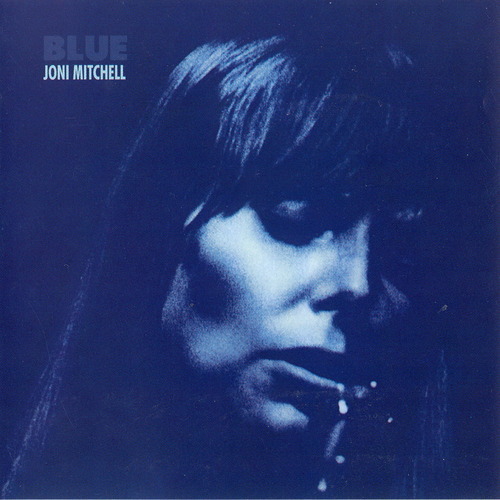
- All I Want
- Joni Mitchell
- Blue

- My Old Man
- Joni Mitchell
- Blue
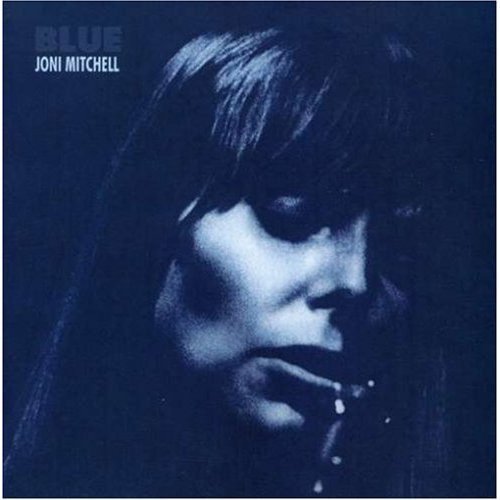
- Little Green
- Joni Mitchell
- Blue
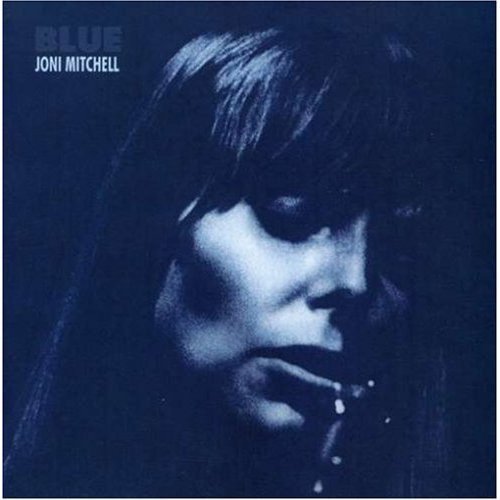
- Carey
- Joni Mitchell
- Blue
- Carey get out your cane . . . . .
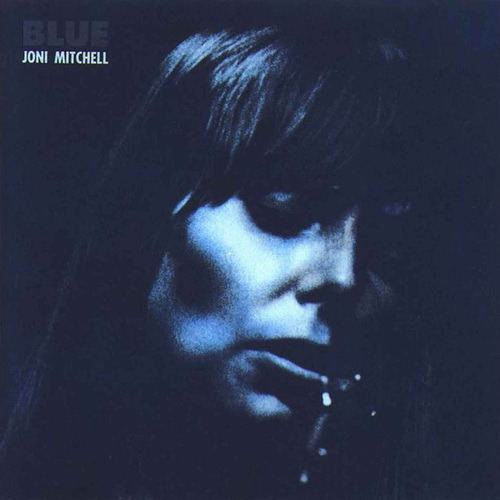
- Blue
- Joni Mitchell
- Blue
one of the seminal moments in music and of course bought when it came out . . . I had been doing this since the first album I bought 'Clouds'
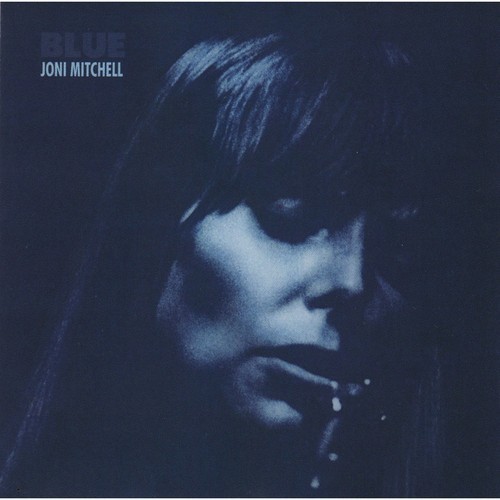
- California
- Joni Mitchell
- Blue
:
“…So I bought me a ticket
I caught a plane to Spain
Went to a party down a red dirt road
There were lots of pretty people there
Reading Rolling Stone reading Vogue
They said “How long can you hang around?”
I said a week maybe two
Just until my skin turns brown
Then I’m going home to California ”
California | Joni Mitchell
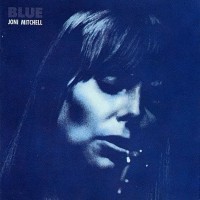
- A Case Of You
- Joni Mitchell
- Blue
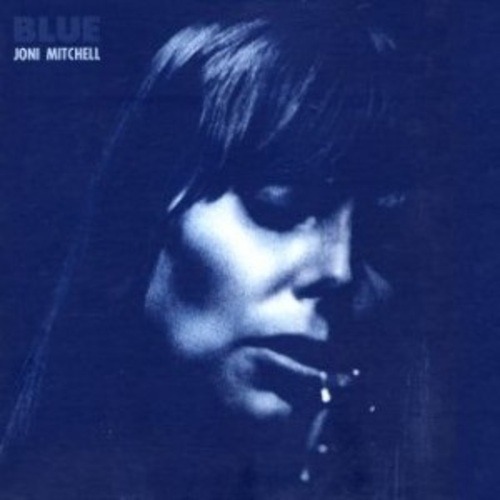
- River
- Joni Mitchell
River | Joni Mitchell possibly IMHO one of the best songs ever written
via Austin Kleon newsletter . . . . .
"So, there is a sort of convergence starting to happen between the computer and musical instruments, but it’s still quite a long way off. Basically, you’re still sitting there using just the muscles of your hand, really. Of one hand, actually. It’s another example of the transfer of literacy to making music because the assumption is that everything important is happening in your head; the muscles are there simply to serve the head. But that isn’t how traditional players work at all; musicians know that their muscles have a lot of stuff going on as well. They’re using their whole body to make music, in fact. Whereas it’s quite clear that if the interface between you and a computer is a mouse, then everything of interest that happens must be happening in your head. It’s a big step backwards, I think."
— Eno
An artist is now much more seen as a connector of things, a person who scans the enormous field of possible places for artistic attention, and says, What I am going to do is draw your attention to this sequence of things. If you read art history up until 25 or 30 years ago, you’d find there was this supposition of succession: from Verrocchio, through Giotto, Primaticcio, Titian, and so on, as if a crown passes down through the generations. But in the 20th century, instead of that straight kingly line, there’s suddenly a broad field of things that get called art, including vernacular things, things from other cultures, things using new technologies like photo and film. It’s difficult to make any simple linear connection through them. Now, the response of early modern art history was to say, Oh, OK. All we do is broaden the line to include more of the things we now find ourselves regarding as art. So there’s still a line, but it’s much broader. But what postmodernist thinking is suggesting is that there isn’t one line, there’s just a field, a field through which different people negotiate differently. Thus there is no longer such a thing as “art history” but there are multiple “art stories.” Your story might involve foot-binding, Indonesian medicine rituals, and late Haydn string quartets, something like that. You have made what seems to you a meaningful pattern in this field of possibilities. You’ve drawn your own line. This is why the curator, the editor, the compiler, and the anthologist have become such big figures. They are all people whose job it is to digest things, and to connect them together… To create meanings - or perhaps “new readings,” which is what curators try to do - is to create. Period. Making something new does not necessarily involve bringing something physical into existence - it can be something mental such as a metaphor or a theory. More and more curatorship becomes inseparable from the so-called art part. Since there’s no longer a golden line through the fine arts, you are acting curatorially all the time by just making a choice to be in one particular place in the field rather than another.
again from Austin Kleon Newsletter . . . .
Unadventure as creation »
NYT: Pushing Back the Limits of Speech and Music
Eno on unadventure:
“In my normal life I’m a very unadventurous person,” Mr. Eno said.
“I take the same walk every day and I eat in the same restaurants,
and often eat exactly the same things in the same restaurants.
I don’t adventure much except when I’m in the studio, and then I only want to adventure.
I cannot bear doing something again, or thinking that I’m doing something again.”
As Jacobs once said, “Differentiation emerg[es] from generality.
Differentiations become generalities from which further differentiations occur.”
My summer has been only about variation — in location, in people,
in process — but slowed down creation here. It’s good to be home.
It’s like Flaubert said,
“Be regular and orderly in your life, so that you may be violent and original in your work.”
Routine is key.
Brian Eno on Television (1991)
Stop being so right Brian Eno. STOP. Go, like, make a 30-minute song with five soft piano notes.
Replace “TV"with “art,” period.
And yes, Brian Eno was right about pretty much everything.
again from Austin Kleon
Software and hardware have changed music dramatically in the last thirty or forty years.
It’s very, very easy to make pretty good music.
I could take anyone in this room, and within two hours,
we could make a pretty good music.
(Pretty good isn’t very interesting, but pretty good is possible.)
But writing songs is just about in the same place it was in the days of Chaucer."
— Eno,












